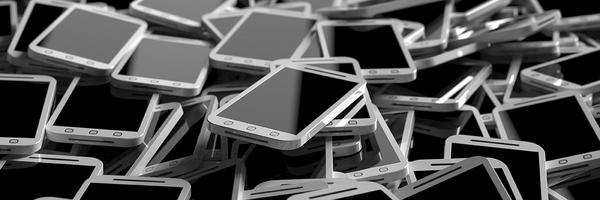Cheaper 5G phones may spark global smartphone sales rebound
Industry analysts expect the smartphone market to recover from the beating it took last year from the COVID-19 pandemic, with shoppers choosing low-cost 5G models.
The rush to buy 5G phones for as low as $200 would carry 2021 sales to just short of pre-pandemic figures, Gartner reported this week. The analyst firm expects an 11.4% jump in year-over-year sales, compared with a 10.5% drop last year.
Research firm IDC also predicted a market recovery based on shipments to smartphone sellers. In its latest forecast, released late last year, the company foresaw a 4.4% increase in shipments.
Gartner expects cheaper 5G devices and better 5G service to drive smartphone demand in China and mature markets like the United States. Researcher Anshul Gupta noted that many consumers delayed replacing phones during 2020's economic uncertainty.
"Lower-end 5G smartphones … are expected to drive more momentum for 5G smartphones in 2021 across all regions," he said.
Gartner predicts 5G smartphone sales will represent 35% of the overall market in 2021, rising to 539 million units worldwide from 213 million in 2020.

Low-cost 5G devices are essential in transitioning to the next-generation wireless network. People will unlikely pay extra to access a service that isn't delivering much more than 4G today. An October Opensignal report ranked U.S. 5G's speed lowest among the 15 leading markets. Also, users had access to the service only about 20% of the time.
"I don't see [5G's potential] as a reason to rush out and purchase any 5G-enabled device," said Enterprise Strategy Group analyst Mark Bowker. "Most people and most applications aren't taking advantage of the full capabilities of what that network has to offer yet."
Therefore, manufacturers are lowering 5G phone prices to attract buyers. IDC expects the worldwide average selling price for 5G phones to drop from $611 in 2020 to $582 this year. By 2024, the price will reach $453.
IDC analyst Ryan Reith said consumers might walk into the store to buy a 4G device but leave with a 5G phone that didn't cost much more.
Phone manufacturers have adjusted to a more price-conscious market in general. Apple stayed under the $1,000 mark when it introduced its 5G iPhone 12, while Samsung had to cut the price of its Galaxy phones. The base model S21 Galaxy debuted at $800, substantially less than its $1,000 predecessor.
"Even the best of the premium players realizes we have been tapping on the price ceiling around smartphones for quite some time," Reith said.
Enterprise Strategy Group (ESG) is a division of TechTarget.
Mike Gleason is a reporter covering end-user computing topics such as desktop management. He previously covered communities in the MetroWest region of Massachusetts for the Milford Daily News, Walpole Times, Sharon Advocate and Medfield Press. He has also worked for newspapers in central Massachusetts and southwestern Vermont and served as a local editor for Patch. He can be found on Twitter at @MGleason_TT.








